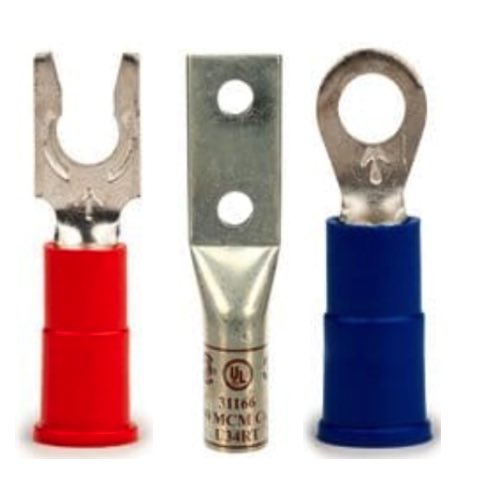3M Wire Terminals

3M wire terminals represent a high-performance crimp terminal solution for industrial, automotive, and commercial electrical connections. As a leading supplier of crimp terminals, 3M offers sturdy, high-quality, and easy-to-install products that provide a sure connection in a variety of demanding environments. The 3M Highland Terminals applications and the Scotchlok and 3M Highland product lines allow for high-reliability connections that are also safe and maintain their integrity over time, thanks to the individually molded insulators that come with each terminal. Enhancing the ease of use, 3M wire terminals provide features that help ensure the correct placement of tools and a nice crimp every time. Whether it be a ring terminal, spade connector, or a quick disconnect, 3M wire terminals help technicians feel confident about the safety, professionalism, and reliability of any installed wiring.
3M offers a broad range of crimp terminals to meet various applications. They serve as a family of connectors with several different features, all of which contribute to making the 3M crimp terminal one of the better connector choices for many applications. They have excellent conductivity. They have good mechanical strength and assembly productivity. They certainly have sufficient electrical strength. The terminals meet various UL standards and have several different kinds of insulation options: PVC, nylon, and even no insulation for some applications (to save space). All of these features add up to what I consider a reliable, safe, and useful family of crimp terminals.
Industrial Wiring Tips and Tricks
Wire Type
MTW is typically used in industrial control panels. The flexibility of the wire allows it to be easily maneuvered through wire ducting. THHN wire is commonly found in homes or commercial buildings. The rigidity of the wire makes it easier to pull through conduit. XHHW wire is similar to THHN but provides a more protective insulation.
Wire Color
The National Electrical Code (NEC) or UL are great points of reference when trying to decide what colors of wire to use. For example, UL standard states that a ground wire should always be green, an AC hot or live wire should be black and AC neutral should be white. These are just a few examples of UL code requirements.
Wire Size
A simple rule of thumb when selecting wire size is, the higher the current, the larger the wire. It is also important to consider the bend radius of the wire. If a wire is bent too sharply, the conductors within the insulation can be damaged.
Wire Connection
It is important to make sure that the wire is connected properly and that enough torque has been applied. If enough torque is not applied to the electrical connection, the wire can become loose over time resulting in a poor electrical connection. Too much torque can damage the the wire and electrical equipment.
Wire Labels
Labeling is essential when performing any kind of electrical wiring. Proper labeling will allow others to easily identify the function of a wire, where it is going and where it has been. It can also make troubleshooting on a panel or any electrical device much easier when worked on at a later date.

